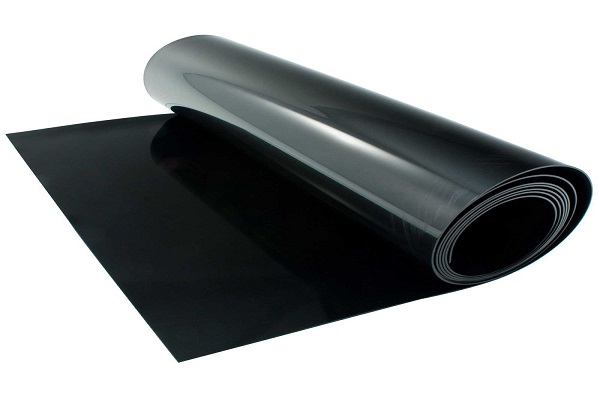
In daily use, rubber products may encounter the problem of stickiness, especially industrial rubber sheets. This not only affects their appearance and feel but may also have an adverse impact on their performance. So, what are the causes of stickiness in industrial rubber sheets and how can they be dealt with?
There are mainly three reasons for the stickiness of rubber products.
First, the exudation of small molecule components such as plasticizers.
During the production of rubber, substances like plasticizers are often added to improve its performance. However, over time and with changes in the usage environment, these small molecule substances may exude from the interior of the rubber to the surface, causing the rubber sheet to become sticky.
Second, surface oxidation or degradation due to exposure to light.
During long-term use, the surface of rubber may react with oxygen in the air or degrade due to exposure to sunlight, changing the surface properties of the rubber and causing stickiness.
Third, loss of release agents.
Release agents play a crucial role in the production and use of rubber, as they prevent the rubber from sticking to other objects. When release agents are lost, the rubber becomes prone to stickiness.

>send emails to sales@jingdongrubber.com,get a quote now
To address these causes, we can adopt corresponding treatment methods.
For the exudation of small molecule components such as plasticizers, the solution lies in adjusting the formula and storage conditions. During the production of rubber sheets, the amount of plasticizers should be controlled reasonably, and stable plasticizers that are less volatile should be selected. In terms of storage, ensure that the temperature and humidity of the storage environment are appropriate, avoiding excessively high or low temperatures and excessive humidity, which can reduce the exudation of small molecules.
If stickiness is caused by surface oxidation or degradation due to exposure to light, the solution is to adjust the stabilizer formula and avoid exposure to light and excessive heat during storage. Choosing the right stabilizer can slow down the oxidation and degradation of rubber, extending the service life of the rubber sheet. At the same time, when storing rubber sheets, they should be placed in a cool, dry, and well-ventilated area, avoiding direct sunlight and proximity to heat sources.
When stickiness is caused by the loss of release agents, the surface can be treated with powders such as calcium carbonate or silica. These powders can adhere to the surface of the rubber, forming a protective layer that reduces the contact area between the rubber and other objects, thereby reducing the likelihood of stickiness.
In addition to the above methods, preventive measures can also be taken during the production and use of rubber sheets to avoid the occurrence of stickiness. For example, in the treatment of metal surfaces, ensure that there is no rust and no oil, dust, or impurities adhering to the surface. Common treatment methods include sandblasting, shot blasting, phosphating, and galvanizing. The surface roughness observed under a microscope, from largest to smallest, is sandblasting, shot blasting > phosphating > galvanizing.
In terms of the rubber slurry coating process, ensure stability and avoid issues such as too thin slurry, missed coating, insufficient coating, and residual solvents. At the same time, ensure a certain thickness of the coating, especially for surface coatings, to allow for sufficient mutual diffusion and cross-linking, achieving a certain modulus gradient layer. Additionally, pay attention to the rationality of the formula to ensure that the vulcanization speed of the rubber compound is consistent with that of the rubber slurry, and avoid excessive storage time of the rubber compound, using fresh rubber compound as much as possible. In terms of pressure, ensure that the mold fits tightly to prevent excessive loss of local pressure. During operation, be careful to prevent metal parts from staying in the mold for too long and perform vacuuming on the mold to ensure that the rubber compound enters the cavity in a vacuum state. Exhaust slots or overflow slots can also be set on the mold.
Stickiness in industrial rubber sheets is a common problem, but as long as we understand its causes and take corresponding treatment methods and preventive measures, we can effectively solve this problem and ensure the performance and service life of the rubber sheets.
Jingdong Rubber Co., Ltd. is a professional rubber sheet manufacturer, producing silicone rubber sheet, natural rubber sheet, fluorine rubber sheet, neoprene rubber sheet, insulating rubber sheet,EPDM rubber sheets, oil-resistant rubber sheets, anti-static rubber sheets, flame-retardant rubber sheets, conductive rubber sheets, anti-slip rubber sheets, and cowshed mats, etc. with 40 years of industry experience, are popular both at home and abroad. If you need any of our products,please send emails to sales@jingdongrubber.com.

